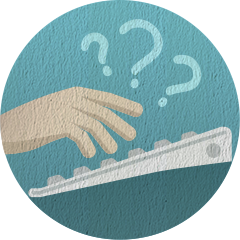Are Welsh and Irish the only non-Indo-European languages in Europe?
-
My friend told me that Welsh and Irish are not Indo-European. I can actually understand that because they don't sound or look anything like Indo-European languages. And we all know that Welsh and Irish are not related to English, which is an Indo-European language. While the Anglo-Saxons arrived in Britain, the original Celtic Britons could not understand anything of what they said, and that shows that Celtic languages and Anglo-Saxon language are not in the same family. I know that Welsh and Irish belong to the Celtic language family, but are they related to other languages? I find Welsh and Irish among the most beautiful languages in the world, and there is no wonder why Tolkien based the elven languages on Welsh, Irish and Finnish. I think Finnish looks a lot like Celtic languages. Is there any relationship between Welsh, Irish and Finnish?
-
Answer:
Welsh and Irish are both Celtic languages and all Celtic languages are Indo-European languages. See http://en.wikipedia.org/wiki/Celtic_languages . And see http://en.wikipedia.org/wiki/Indo-European_languages . “And we all know that Welsh and Irish are not related to English, which is an Indo-European language.” No-one “knows“ that. English is a Germanic language and so for course would not be understood by the native Britons. They are related, but by that time the relationship would be too distant for one group to understand the other. Neither would Latin or Greek or Hindu or any other language that was different enough to belong to another sub-family of the Indo-European family of languages be understood by the Britons or Irish. I very much doubt that even the Britons and Irish could understand each other by the 5th century. From “Letters of J.R.R. Tolkien”, letter 213: “I go frequently to Ireland (Eire: Southern Ireland) being fond of it and of (most of) its people; but the Irish language I find wholly unattractive.” From letter 297: “Though actual congruences (of form + sense) occur in unrelated real languages, and it is impossible in constructing imaginary languages from a limited number of component sounds to avoid such resemblances (if one tries to – I do not), it remains remarkable that /nasc/ is the word for ‘ring’ in Gaelic (Irish: in Scottish usually written /nasg/). It also fits well in meaning, since it also means, and prob. originally meant, a /bond/, and can be used for an ‘obligation’. Nonetheless I only became aware, or again aware, of its existence recently in looking for something in a Gaelic dictionary. I have no liking at all for Gaelic from Old Irish downwards, as a language, but it is of course of great historical and philological interest, and I have at various times studied it. (With alas! very little success.) It is thus probable that /nazg/ is actually derived from it, and this short, hard and clear vocable, sticking out from what seems to me (an unloving alien) a mushy language, became lodged in some comer of my linguistic memory.” Tolkien also talks about linguistic likes and dislikes and his theory that people, including himself, are born with innate prejudices in that area. And he quite admits that Quenya was inspired by Finnish and that Sindarin was inspired by Welsh. From letter 163: “A fascination that Welsh names had for me, even if only seen on coal-trucks, from childhood is another; though people only gave me books that were incomprehensible to a child when I asked for information. I did not learn any Welsh till I was an undergraduate, and found in it an abiding linguistic-aesthetic satisfaction. Spanish was another: my guardian was half Spanish, and in my early teens I used to pinch his books and try to learn it: the only Romance language that gives me the particular pleasure of which I am speaking – it is not quite the same as the mere perception of beauty: I feel the beauty of say Italian or for that matter of modern English (which is very remote from my personal taste): it is more like the appetite for a needed food. Most important, perhaps, after Gothic was the discovery in Exeter College library, when I was supposed to be reading for Honour Mods, of a Finnish Grammar. It was like discovering a complete wine-cellar filled with bottles of an amazing wine of a kind and flavour never tasted before. It quite intoxicated me; and I gave up the attempt to invent an ‘unrecorded’ Germanic language, and my own ‘language’ – or series of invented languages – became heavily Finnicized in phonetic pattern and structure.” Tolkien also talks about his dislike for traditional Celtic literature because it is too mad for his taste. Finnish is indeed not an Indo-European language, belonging rather to the Baltic-Finnic subgroup ( http://en.wikipedia.org/wiki/Baltic-Finnic_languages ) of the Finno-Ugric group ( http://en.wikipedia.org/wiki/Finno-Ugric_languages ) which belongs to the Uralic family of languages ( http://en.wikipedia.org/wiki/Uralic_languages ). Finnish does not seem to me to look anything like either Welsh or Irish or any other language of which know anything. The relationships and lack of relationships between various European languages has long been studied. Don’t depend on an ignorant friend for language information. Use Google on the web to look up anything you want to know about languages. There are lots of non-Indo-European native languages in Europe besides the Uralic group: Basque, Maltese which is mainly Semitic, various mixtures of Hebrew with other European languages, Turkish which is spoken as a native tongue in parts of Europe and other Altaic languages related to Turkish, the Caucasian languages most of which may or may not be related to one another, Assyrian Neo-Aramaic, and probably one or two others that I have forgotten.
Erin at Yahoo! Answers Visit the source
Other answers
Welsh and Irish are Indo-European languages. http://en.wikipedia.org/wiki/List_of_Indo-European_languages, http://www.danshort.com/ie/iecentum.htm The only non-Indo-European language in Europe, of which I'm aware, is Basque. http://en.wikipedia.org/wiki/Language_families , http://en.wikipedia.org/wiki/Basque_language
Cirbryn
Welsh and Irish are Celtic languages, which are part of the Indo-European language family. Basque, Hungarian and Finnish are not Indo-European languages however. wl
WolverLini
There is no relation ship between Finnish and Gaelic.
Vlad the Inhaler
nope welsh and irish are not related to english but some where down the line scotish welsh and irish have similar roots i have heard Nos da << good night in welsh
tyson
Related Q & A:
- Who was the last Welsh speaking footballer to score a goal at wembley stadium?Best solution by Yahoo! Answers
- How do non-polar substances dissolve other non-polar substances?Best solution by Yahoo! Answers
- What are the original indo rollers covered with?Best solution by Yahoo! Answers
- What is the difference between a non-profit organization and a non-governmental organization?Best solution by maxwell.syr.edu
- What's the best non-medical and non-law job in the US?Best solution by usnews.com
Just Added Q & A:
- How many active mobile subscribers are there in China?Best solution by Quora
- How to find the right vacation?Best solution by bookit.com
- How To Make Your Own Primer?Best solution by thekrazycouponlady.com
- How do you get the domain & range?Best solution by ChaCha
- How do you open pop up blockers?Best solution by Yahoo! Answers
For every problem there is a solution! Proved by Solucija.
-
Got an issue and looking for advice?

-
Ask Solucija to search every corner of the Web for help.

-
Get workable solutions and helpful tips in a moment.

Just ask Solucija about an issue you face and immediately get a list of ready solutions, answers and tips from other Internet users. We always provide the most suitable and complete answer to your question at the top, along with a few good alternatives below.